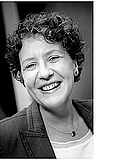Konferenz zu Architexture
Projektleiter:
Finanzierung:
Fördergeber - Sonstige;
This conference deals with ancient terminology of sacred spaces (temples, houses, and tombs) of currently mainly unpublished and not systematically collected epigraphic, glossographic and architectural theoretical sources. An introduction to each text outlines the source’s author, background and epoch, as well as providing background information about the topic and pointing out important grammatical peculiarities and theological backgrounds as well as an examination of the relation between the sacred space and its context. The project has a modest goal: to provide students of theology and colleagues in the field of Graeco-Roman antiquity with the basic information needed to follow the ancient concepts of sacred spaces in antiquity, and to provide jumping-off points for their own further research. In so doing, the project focuses entirely on Hellenistic world.
In the Hebrew and Greek Bible (Septuagint, New Testament), and its translation into Latin (Vetus Latina and Vulgate), the literature of the Second Temple or the Jewish philosopher Philo of Alexandria or the historian Flavius Josephus, one finds a variety of terms with regard to the sacred architecture, especially with regard to the architectural constructions and furnishing of cult spaces, which have hitherto hardly been considered in research or are rashly transformed into modern anachronistic terminology. Thus, the reference to real existing cult spaces and constructions is lost as well as to the underlying concepts of cult; in the exegetical literature this opens a door to an anti-Judaistic interpretation (which is especially true for New Testament texts and their interpretation in modern exegesis).
The above-mentioned theological literature, however, uses different strategies for describing the architecture of cults and their spatial conceptions: ancient profane technical terminology, the adoption of epigraphic formula language in building inscriptions as well dedication inscriptions, the creative use of genuine hapax legomena or the use of very unusual architectural terminology all refer to the real material culture and the majority designates concrete spaces that were connected with a religious function.
Based on the transformations that have already experienced the description of the Jewish cult and above all the Temple of Jerusalem in the Septuagint, we are planning to offer the relevant sources listed in the Hebrew and Greek Bible as well as in their Latin translations and show how these are incorporated into their theological and religious historical context, for example, the ten books of the ancient architect Vitruvius Pollio, the glossographic literature and the numerous inscriptions from the Hellenistic-Roman period central; therefore local differentiations can be identified.
In the Hebrew and Greek Bible (Septuagint, New Testament), and its translation into Latin (Vetus Latina and Vulgate), the literature of the Second Temple or the Jewish philosopher Philo of Alexandria or the historian Flavius Josephus, one finds a variety of terms with regard to the sacred architecture, especially with regard to the architectural constructions and furnishing of cult spaces, which have hitherto hardly been considered in research or are rashly transformed into modern anachronistic terminology. Thus, the reference to real existing cult spaces and constructions is lost as well as to the underlying concepts of cult; in the exegetical literature this opens a door to an anti-Judaistic interpretation (which is especially true for New Testament texts and their interpretation in modern exegesis).
The above-mentioned theological literature, however, uses different strategies for describing the architecture of cults and their spatial conceptions: ancient profane technical terminology, the adoption of epigraphic formula language in building inscriptions as well dedication inscriptions, the creative use of genuine hapax legomena or the use of very unusual architectural terminology all refer to the real material culture and the majority designates concrete spaces that were connected with a religious function.
Based on the transformations that have already experienced the description of the Jewish cult and above all the Temple of Jerusalem in the Septuagint, we are planning to offer the relevant sources listed in the Hebrew and Greek Bible as well as in their Latin translations and show how these are incorporated into their theological and religious historical context, for example, the ten books of the ancient architect Vitruvius Pollio, the glossographic literature and the numerous inscriptions from the Hellenistic-Roman period central; therefore local differentiations can be identified.
Kontakt

Prof. Dr. Annette Weissenrieder
Martin-Luther-Universität Halle-Wittenberg
Institut für Bibelwissenschaften und Kirchengeschichte
Franckeplatz 1
06110
Halle (Saale)
Tel.:+49 345 5523001
weitere Projekte
Die Daten werden geladen ...

